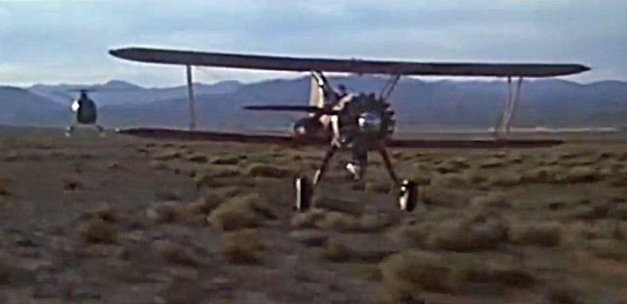 Many years ago, I saw a wonderful video called One Six Right, which was all about Van Nuys Airport, located in the San Fernando Valley, to the north of Los Angeles. In reality it was a fantastic promo documentary video about Van Nuys, to convince people that it was more than worth keeping, as it made such commercial as well as sentimental sense. One Six Right is the main runway, which favours the prevailing winds, so most aircraft land and take off from it. One Six Left and its reciprocal is used primarily for training flights as it is ‘only’ 4,000 feet (1,220 metres) and therefore half as long as its parallel companion.
Many years ago, I saw a wonderful video called One Six Right, which was all about Van Nuys Airport, located in the San Fernando Valley, to the north of Los Angeles. In reality it was a fantastic promo documentary video about Van Nuys, to convince people that it was more than worth keeping, as it made such commercial as well as sentimental sense. One Six Right is the main runway, which favours the prevailing winds, so most aircraft land and take off from it. One Six Left and its reciprocal is used primarily for training flights as it is ‘only’ 4,000 feet (1,220 metres) and therefore half as long as its parallel companion.
The video was a no-expense spared affair, with some of the most creative and beautifully shot sequences of warbirds, aerobatic stunt flying, a low and slow J3 Cub, following a DC3 in to land (almost sitting, it seemed, on the tail fin) as well as a variety of other aircraft – some very common, some far from so.
And there were plenty of interviews with current and past pilots, men and women, based at Van Nuys. I was truly transfixed the first time I saw the video as, at the time, there was no aviation film with such hi-definition images, so beautifully edited into a series of sections featuring different flight regimes – with titles like ‘The Joyride‘, ‘Look Ma – No Hands!’ and of course, that old favourite of all pilots: ‘Dreams of Flying‘.
 So when I had a very brief opportunity to go and see Van Nuys Airport in the flesh, of course I jumped at it. The day was very hot – in the mid-30s celsius (mid-90s fahrenheit) – so I didn’t spend a lot of time there – just enough to see a few biz jets arrive and depart, a few learner pilots doing their touch-and-goes, and take a few photos from the public viewing area, which unfortunately is surrounded by a 3-metre high chain link fence (a sign of our terrorised times I suppose).
So when I had a very brief opportunity to go and see Van Nuys Airport in the flesh, of course I jumped at it. The day was very hot – in the mid-30s celsius (mid-90s fahrenheit) – so I didn’t spend a lot of time there – just enough to see a few biz jets arrive and depart, a few learner pilots doing their touch-and-goes, and take a few photos from the public viewing area, which unfortunately is surrounded by a 3-metre high chain link fence (a sign of our terrorised times I suppose).
But just to be there was great; the sight of the control tower – which features strongly in the video – and the hills surrounding the valley was enough to bring back some of those flying sequences in the video.
Van Nuys is one of the busiest GA airfields in the world with almost 300,000 aircraft movements annually (that figure’s not a mistake!). Eat your heart out Tyabb….
If you want to buy a copy of One Six Right, you can get it from most good pilot supplies shops or from the official website by clicking here: One Six Right
Or you can rent a (low resolution) viewing on YouTube by clicking here: One Six Right



